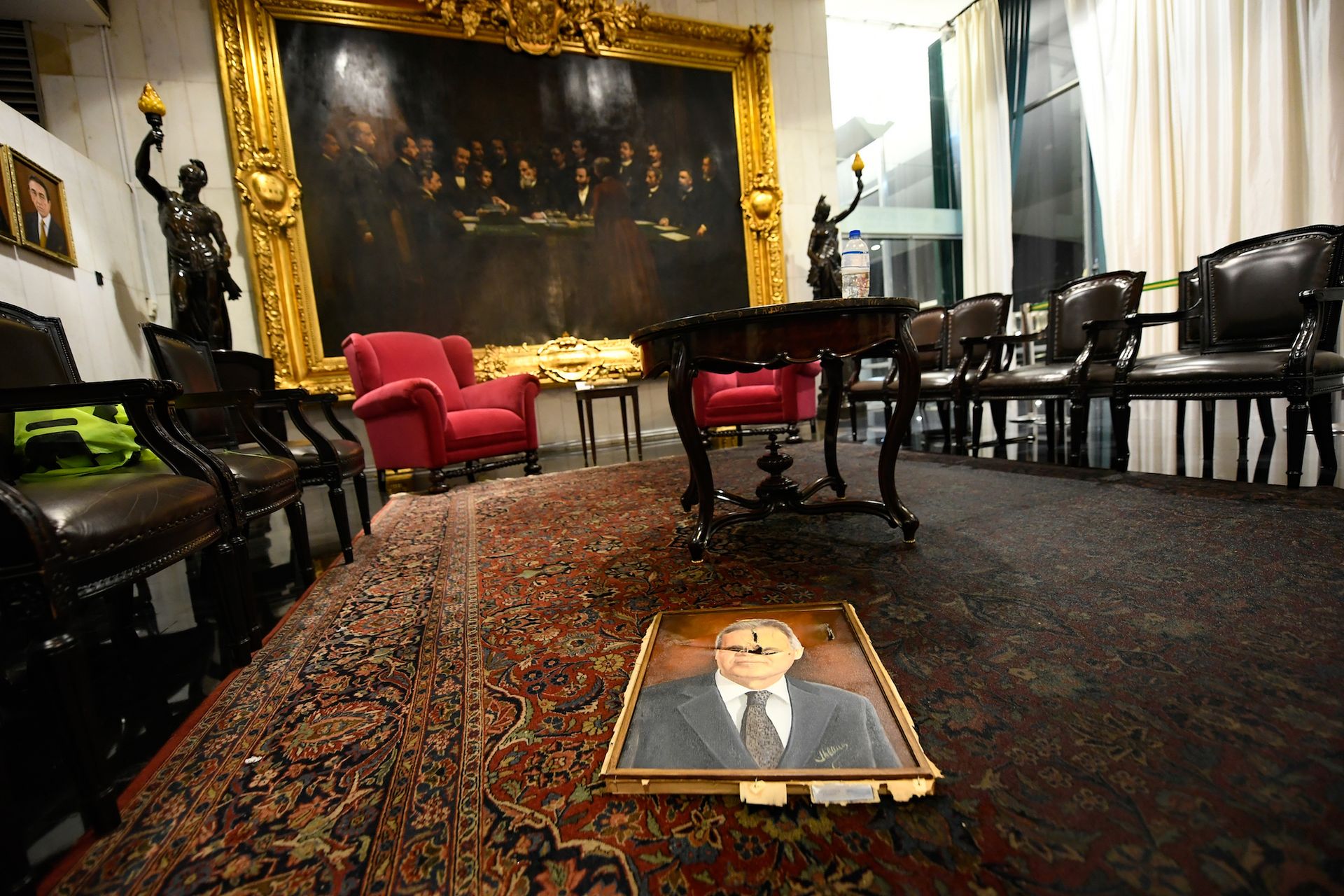An extensive project to restore art vandalised during the 2023 insurrection at the Brazilian government’s headquarters will be completed in December, the National Institute of Historical and Artistic Heritage (Iphan) announced earlier this month.
Hundreds of works of art and design, as well as historical objects were targeted in the 8 January riots in Brasília. Chaos followed the inauguration of President Luiz Inácio Lula da Silva, when supporters of outgoing president Jair Bolsonaro stormed the buildings in protest of election results, causing an estimated $4m in damage.
The final stage of the restoration project involves 11 paintings, six of which have already been fully repaired. Researchers are now focusing on As Mulatas (1962) by the painter Emiliano Di Cavalcanti, a work valued at $1.5m that was stabbed seven times during the uprising. In addition to the paintings, nine works made with wood, iron and paper are also nearing the final stages of the restoration process.
“Each of them is missing some details, such as the final varnish, for example,” the project’s coordinator, Andrea Bachettini, said in a statement. “We also still need to complete the scientific documentation of each piece.”
The $400,000 restoration project is overseen, in part, by the Federal University of Pelotas (UFPel), with support from other organisations. Most of the restoration work is being done on site at a lab installed in the Palácio da Alvorada (official residence of the president of Brazil), with the exception of larger works like a 1973 tapestry by Roberto Burle Marx, which protestors tore and urinated on during the riots.

A damaged painting at Brazil’s National Congress in the aftermath of the 8 January 2023 riot by supporters of former president Jair Bolsonaro Photo: Pedro França/Agência Senado, via Wikimedia Commons
Beyond the restorations, UFPel and Iphan are developing a series of public programmes related to the effort and the preservation of Brazilian cultural heritage, including an exhibition, a book and a seminar.
On the anniversary of the insurrection this year, several works of art and other objects recovered from the buildings were exhibited in the Palácio do Congresso Nacional in Brasília, some still retaining visible signs of damage—like fragments of porcelain vases that had been given to Brazil as diplomatic gifts.
Around 4,000 Bolsonaro supporters entered the government headquarters during the riots. More than 1,300 people have been prosecuted for their involvement, including some who did not invade the buildings but are charged with inciting the action. Earlier this month, the federal police said it had identified and planned to extradite at least 65 people charged with related crimes who had fled to Argentina. The extradition request is pending as Argentine president Javier Millei’s administration evaluates whether some of the fugitives might be granted political asylum.
The government headquarters, called the Praça dos Três Poderes, partly earned Brasília its Unesco World Heritage status in 1987. The complex is made up of three Oscar Niemeyer-designed buildings, which are undergoing separate renovations to address damage caused by insurrectionists to its architecture and outdoor art—for example, the monumental sculpture Os Candangos (1959) by Bruno Giorgi. These renovations are due to be completed in 2025.
Meanwhile, Iphan and other groups are contesting an unrelated urban redevelopment project in Brasília that they argue will threaten Brasília’s Modernist landmarks and Unesco World Heritage status. The Projeto de Preservação do Conjunto Urbanístico de Brasília (PPCUB) will allow hotel heights to soar from the current maximum of three storeys to 12; it also involves the rezoning of designated commercial and non-commercial spaces. The PPCUB has been criticised since it was launched in 2009, but it was approved last month. Iphan, which has no role in the project other than as an advisor, has published an extensive list of amendments and states that it is in the process of analysing the plan to identify possible federal violations.










